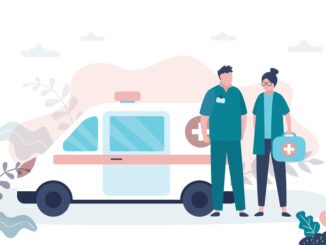
Both practices and patients have the right to end a patient-doctor relationship that isn’t working. Here are the reasons and procedures for removing a patient from a GP list
The removal of a patient from a GP practice list should be a rare event, but reasons why a patient may be removed include:
- disagreement between the practice and patient, and an irretrievable breakdown of the relationship;
- the patient has died;
- the patient has moved outside the practice area;
- patients have a right to change their practice.
Removing a patient from the practice list
Practices have the right to ask for a patient to be removed from their list. In cases other than violence and abuse, the decision to remove a patient should be made only after careful consideration.
Many patients who are misusing services can change their behaviour if this is brought to their attention. If all else fails, however, it is not in the best interests of either the patient or doctor for an unsatisfactory relationship to continue. You should consider the following points.
- Where practices intend to remove a patient because of the breakdown of the doctor-patient relationship, you should first consider discussing the problem with an independent party, e.g., local medical committee (LMC) secretary.
- Issue a warning to the patient, preferably in writing, giving the reasons for the possibility of removal. Warnings are valid for 12 months and a written record must be retained.
- Send a written notice to the primary care organisation or NHS England, giving the patient’s name, address, date of birth and NHS number.
- The removal will take effect on the eighth day after the request is received.
- If the practice is treating the patient at intervals of less than seven days, the removal will be eight days after treatment ceases, or until the patient is accepted at another practice.
- The only exception is on the grounds of violence, eg when police are involved, in which case the patient will be removed immediately.
- If the removal is on the grounds of violence or threatened violence, the police must have been informed.
When GP practices have a patient who is violent, or exhibiting behaviour that makes them fear for their safety, the patient should immediately be removed from the practice list.
The special allocation scheme
The special allocation scheme provides primary care medical services in a secure environment to patients who meet the criteria; designated GP practices provide services to patients by appointment at specific locations and times as detailed in individually agreed contracts. Patients join the scheme after being immediately removed because of an incident that was reported to the police.
Purpose of the scheme
The purpose of the SAS is to deal with patients who are aggressive, abusive or violent. It aims to protect GPs, practice staff and patients who have the right to be in the practice without fear of intimidating behaviour.
Problems with the scheme
The BMA GPs’ committee is aware of some schemes that require commissioner intervention before a removal is actioned. This is not in line with the regulations, and NHS England has addressed this through amendments to a single national process. Any cases where the regulations seem not to have been applied correctly should be raised with LMCs.
To progress an allocation to the SAS, the regulations require a GP practice to report an incident to the police; however, practices do not need to obtain a police incident number or crime number – so not having an incident number is not a barrier to the immediate removal of a patient who meets the criteria.
When removal is appropriate
The practice must have grounds to show that the individual committed an act of violence – or behaved in such a way that they feared for their safety. The perpetrator could be a doctor, partner, member of staff, visitor or patient on the premises.
There is no exhaustive list of behaviours, and the practice’s judgement is necessarily subjective, but the main types of behaviour that would justify a patient’s immediate removal are:
- assault;
- threatening behaviour;
- behaviour resulting in damage to property.
The removal process
- Call 999 or your local police station as soon as possible.
- State what has happened and, if necessary, request police assistance at the incident location. The police will allocate an incident number that can be requested by the practice.
- Notify NHS England on 0333 014 2884 or [email protected]. The removal takes effect at the time at which the practice contacts primary care support England (PCSE).
- Inform the patient of the removal (as long as this would not be harmful to the patient’s mental or physical health, or put any of the people listed above at risk).
- Notify the Care Quality Commission ‘without delay’, either while a registered activity is provided, or as a consequence of it being provided, including incidents involving the police.
The process after the report to PCSE
After a report to PCSE responsibility passes to them. They must ensure the patient no longer remains on the practice list, and organise that they can continue to receive primary medical services through a commissioned SAS provider.
PCSE will write to the patient to tell them, and should ensure a flag is placed on the patient record to stop them registering at another practice. The removal of a patient, and their allocation to the SAS, will remain under review by a panel.


Be the first to comment